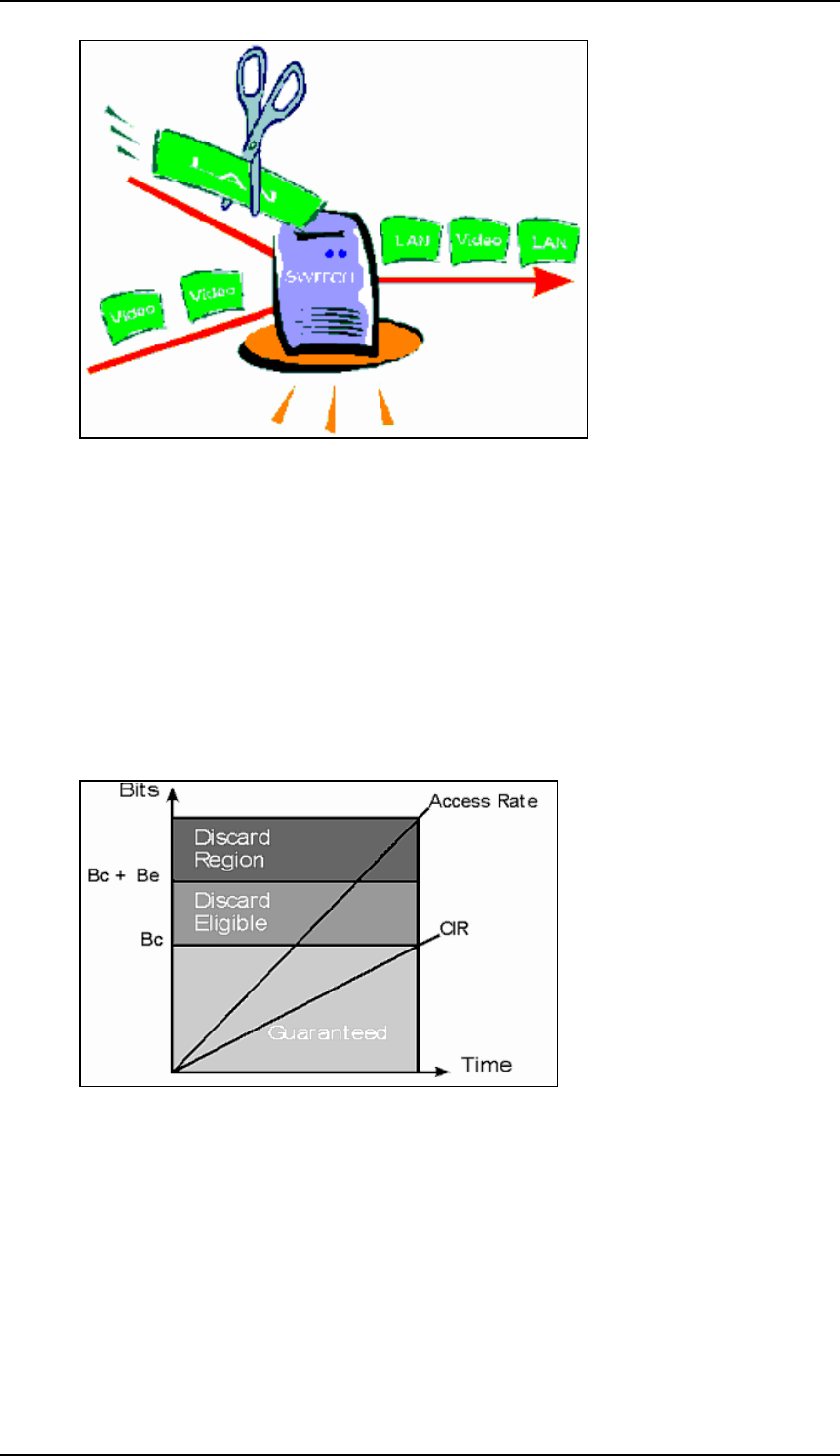
Tandberg Video on Frame Relay
D11624 rev.01 6
Cell based systems cut
packet into fixed sizes
Dropped frames are potentially a more serious problem. The frame relay standard allows
the network service provider to control congestion by simply disposing of any frames
which exceed the users CIR. In other words, if you contract for a CIR of 128 kbps but
send a burst at 192 kbps, frames which exceed the 128 kbps CIR will have a DE
(Discard Eligible) bit set. If some intermediate switch on the network becomes
congested, these frames may be discarded. While an occasional lost frame will not
seriously degrade video quality, too many will cause a noticeable loss of video quality.
In most networks, dropped frames are unlikely to occur. This depends, of course, on the
capacity of the network, the actual traffic load at any given time, how the load varies,
and other factors beyond the control of the end user.
The only certain way is to have
enough CIR to cover all usage.
This is unnecessary in most cases, as the majority of installed public networks are not
oversubscribed. Most carriers are now offering QoS (Quality of Service) or SLA
(Service Level Agreement) guarantees, which categorically provide an end user with
confidence that more than 99% of frames will arrive at their destination. For the Video
over Frame Relay user, there are other ways of reducing the threat of frame loss.
1. The first is the configuration of the frame size. Frame relay allows the payload portion
of the frame to be adjusted to carry larger or smaller amounts of information. This
allows network administrators to adjust the frame size for optimal network
performance. If a small frame packet is lost, it is not carrying too much information as
to critically impair video function.


















